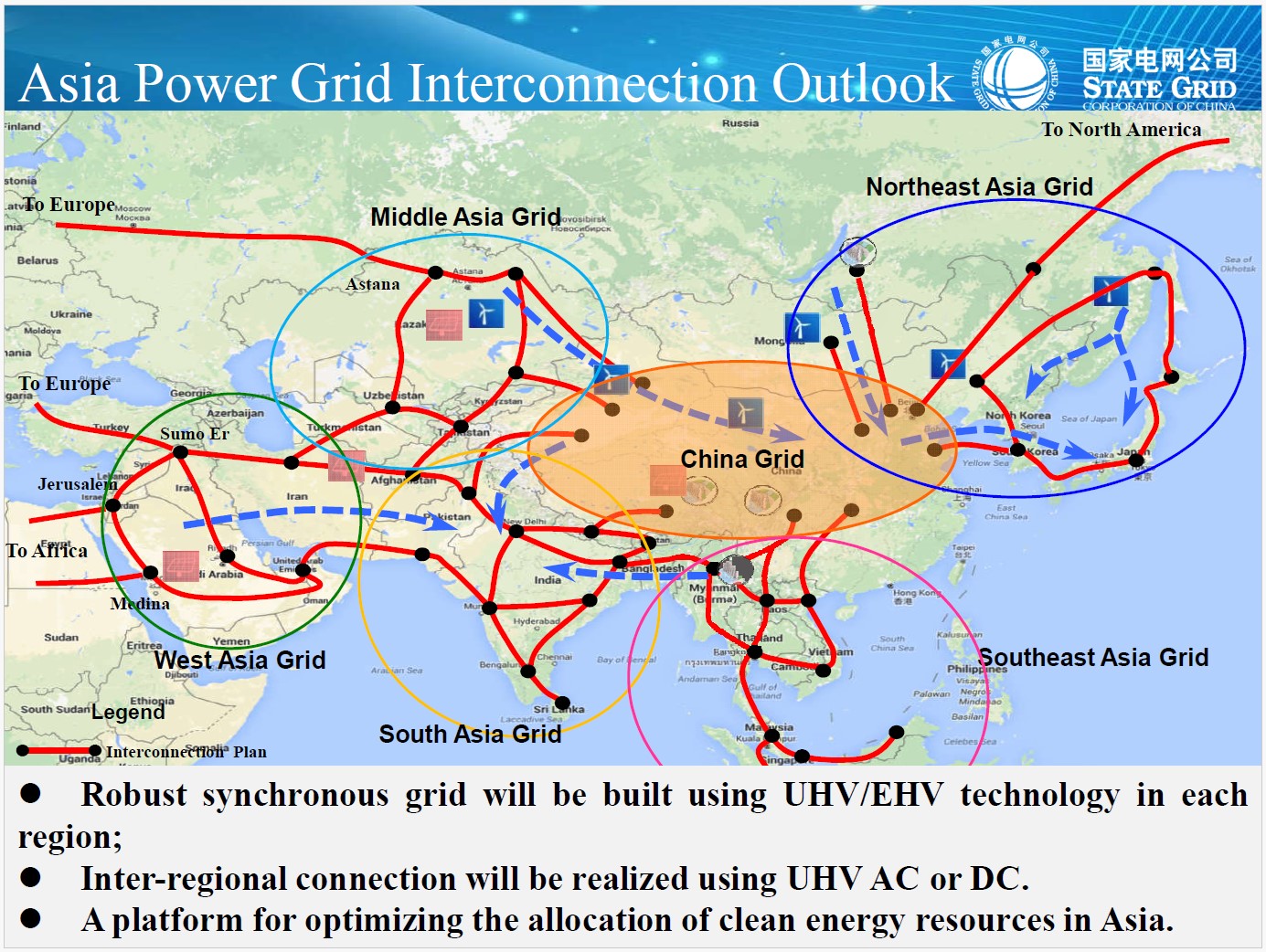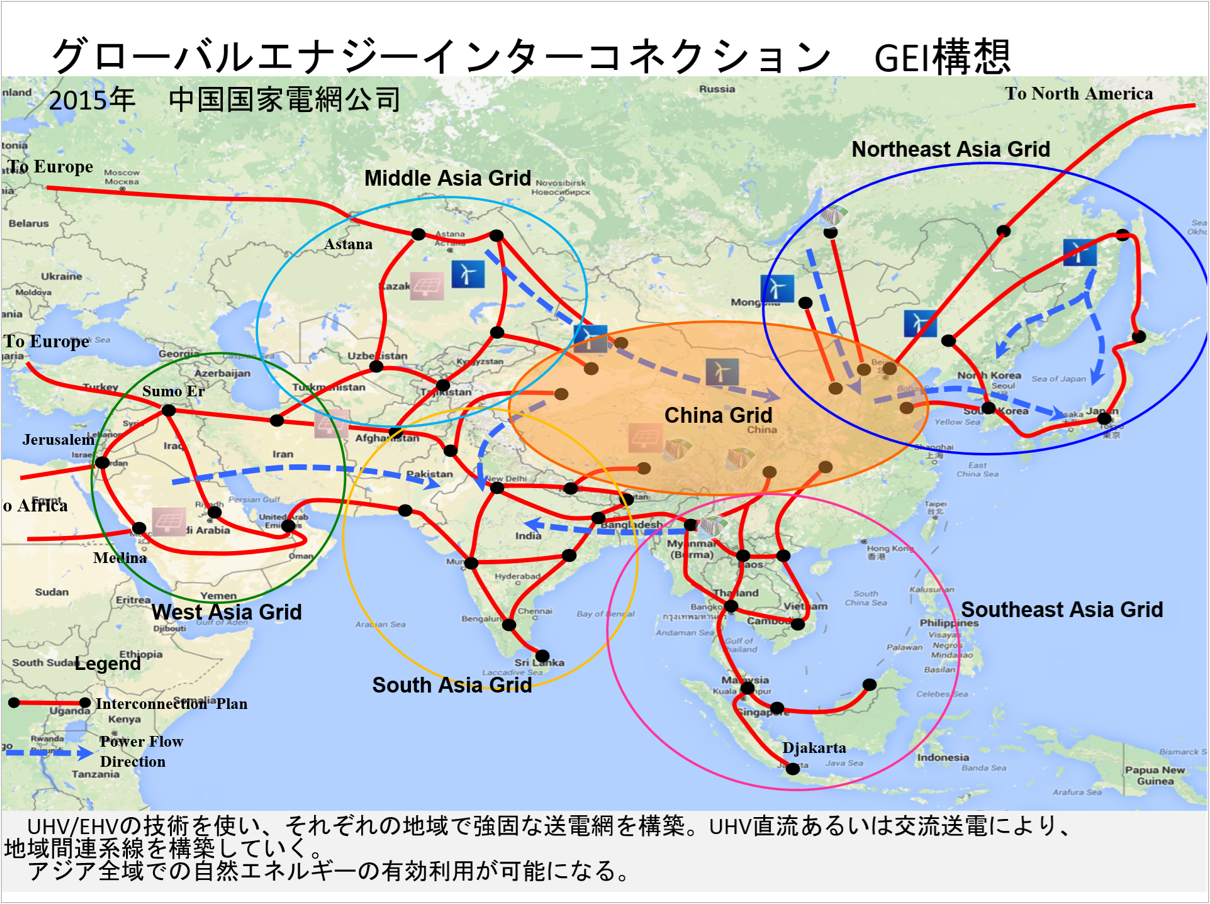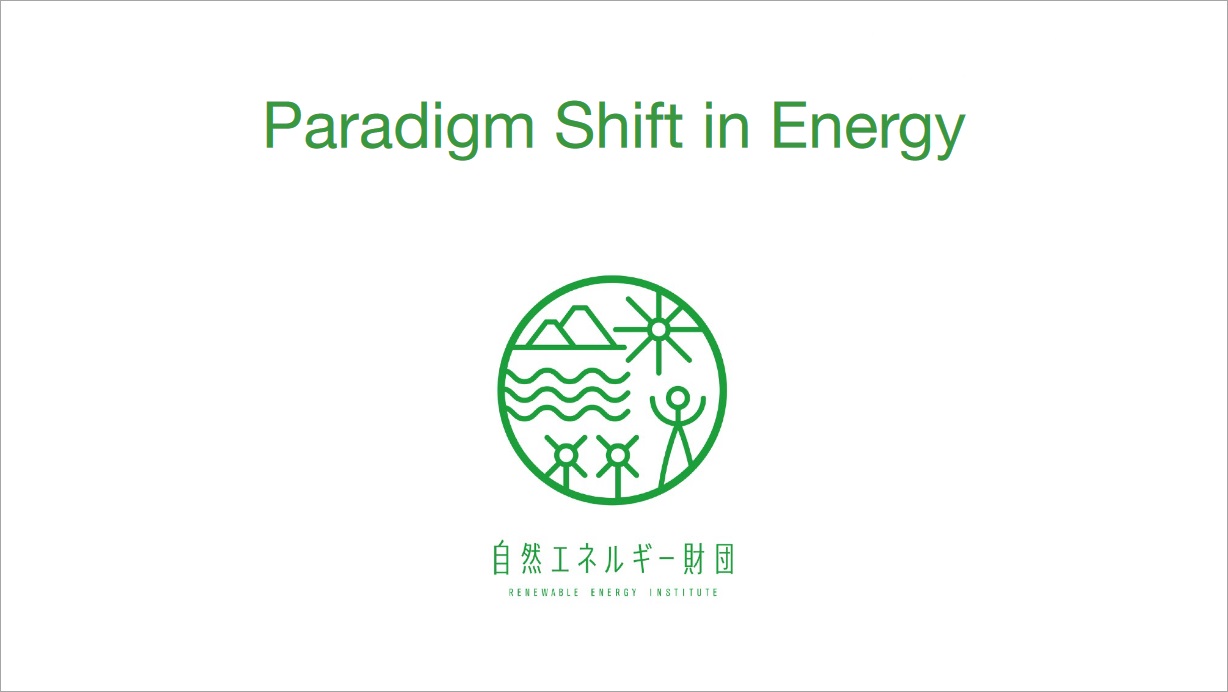In the materials (the "Member Recommendations Reference Documents") submitted for the 30th Meeting Task Force for a Comprehensive Review of Laws and Regulations for Renewable Energy and Other Resources (hereinafter referred to as the Renewable Energy TF Meeting) held on 22 March, an issue arose when the logo of the State Grid Corporation of China (SGCC) appeared on all pages except for the front cover.
This document was prepared in part by Mika Ohbayashi, Director of our Institute, who is a member of the Task Force. The same logo appeared on several slides of the reference material for the 29th Renewable Energy TF Meeting held last December, as well as on the final page of the documents submitted by Ohbayashi to the Ministry of Economy, Trade and Industry (METI) and the Financial Services Agency (FSA) review meetings. This logo was also found on the last page of other materials submitted to other international conferences. Renewable Energy Institute sincerely apologizes for any inconveniences caused by this matter.
Below is an explanation of why this happened. An important point to note is that the logo in question is not a security stamp or watermark, but a regular white logo image which has been placed on a white background and has not been easily visible. Furthermore, the actual content of the material has no connection with SGCC.
The issue has generated diverse opinions, particularly on social media platforms regarding the Institute’s activities and we aim to clarify the facts surrounding this matter.
How the Logo Came to be Displayed
This logo was originally included in the presentation materials at a workshop on international grid connections hosted by the Institute in Seoul on 25th and 26th May 2016. A public workshop was held on the 25th, followed by an expert meeting on the 26th, with invited guests from the Asian Development Bank, the International Energy Charter Secretariat, the Korea Electric Power Corporation, SGCC, the Ministry of Energy of Mongolia, and more.
In July 2016, the Institute launched the Asia International Grid Connection Study Group. The group consisted of energy experts and researchers from Japan. Its purpose was to examine the feasibility of developing an Asian international grid connection. At the time, a number of other organizations were also proposing an international grid connection. These included SGCC, the Korea Electric Power Corporation, and the Japan Policy Council.
In December 2016, Ohbayashi prepared materials for the Study Group’s discussion, which compared and contrasted the various proposals from different organizations. As part of this, a slide showing a conceptual map of an international grid connection from Europe to East Asia (Figure 1) from SGCC's document from the 26 May 2016 workshop was included, along with several other examples.

Figure 1: The slide created by SGCC presented during the May 2016 workshop

When incorporating this slide into her presentation, Ohbayashi attempted to 1) remove the blue bar and white logo at the top of the original slide, 2) translate the text at the bottom into Japanese, and 3) reduce the area of explanatory text to show more of the map. Since the blue bar was in the slide master (slide template), Ohbayashi edited the slide master and removed the blue bar, which made the white logo no longer visible. However, the blue bar on the slide master and the white logo of SGCC were two separate images. Not realizing this, Ohbayashi assumed that by removing the blue bar, the logo was also removed. However, the white logo in the slide master was not visible as it blended with the white background, but it was not deleted and remained in Ohbayashi's file as a blank slide master.
While this slide (Figure 2) was not used in the materials for the Study group, Ohbayashi used the slide master with the white logo to prepare other materials, such as Figure 3, a slide with the Institute's logo, which was used as the final slide in presentations.

The logo in question was identified in the last slide of the presentation materials for meetings with FSA, METI, and others. Ohbayashi usually uses a different slide master with the Institute's logo in the header when preparing presentation materials. However, to match the format of the meeting documents for the Renewable Energy TF meeting, a slide master containing the white logo in question was used for all slides, not just the last page, and this was used throughout the presentation.
The white logo was included on the other slides, in a way that blended into the white background and remained invisible. The documents by Ohbayashi were created using Keynote, an application for Macintosh computers from Apple Inc. The white logo on a white background was not visible in Keynote, so its presence went unnoticed. The logo becomes visible when the file was converted to PDF and viewed on an iPad, iPhone, or certain browsers, but inadequate proofing prior to publication failed to detect the logo, and the PDF went live.
There have been comments on social media about the difference between SGCC logo at the May 2016 workshop and the logo in the Renewable Energy TF meeting slides. These differences, from our understanding, are due to the difference in slide size (from wide screen to standard screen) and minor changes that occurred during the conversion of the Keynote file to PowerPoint which was used to create the TF meeting materials on a Windows PC platform.
These are the circumstances that have led to the appearance of the logo. The content of the materials submitted to the three government meetings and other meetings are entirely unrelated to SGCC and the original documents. This incident could have been avoided with a more thorough review of the materials at the time of preparation and submission. We apologize again to all parties involved. The Institute will confirm whether there are any similar cases that have not yet been identified. Simultaneously, it will further strengthen its system of control over the preparation of documents to prevent future recurrences.
Opinions on the Institute's Activities on Social Media
This issue has triggered various opinions and speculations about the Institute's activities, mainly on social media. We would like to take this opportunity to explain the Institute’s relationship with SGCC and our stance on international grid connection, which is one of the most frequently mentioned issues.
At Renewable Energy Institute’s launch event in September 2011, the Institute proposed the need for greater deployment of renewable energy and the development of a high-voltage DC grid between Hokkaido and Kyushu, and also the concept of an international grid connection in Asia, as measures to address Japan's energy issues exposed by the Great East Japan Earthquake of 11 March and the accident at the TEPCO Fukushima Daiichi Nuclear Power Plant.
A number of organizations, such as the Japan Policy Council, SGCC, and the Korea Electric Power Corporation, have announced their plans for an international power transmission network connecting Asia. In March 2016, the Global Energy Interconnection Development and Cooperation Organization (GEIDCO), an international non-profit organization aiming to realize global transmission interconnections for the cross-border use of renewable energy, was established under the initiative of SGCC.
GEIDCO members include electric power companies from around the world, universities, research institutes, and global companies in the field of power transmission. The Institute joined GEIDCO and became a member of its Board of Directors, recognizing the importance of advancing discussions on the development of an international grid connection (Masayoshi Son, founder and chairman of Renewable Energy Institute, became Vice-President at the time, but has since stepped down).
The Institute’s relationship with SGCC is solely through GEIDCO. Members from SGCC or GEIDCO have been invited to speak at six events (symposiums and workshops) hosted by the Institute between March 2016 and November 2019. All contents from these events can be found on the Institute's website, except for the expert meeting held on 26 May 2016.
Due to changes in the international landscape, Renewable Energy Institute is at present not active in discussions regarding the development of an international grid connection in East Asia. Although the Institute remained a member of GEIDCO's Board of Directors, the Institute 's involvement with GEIDCO and SGCC has become marginal after 2020. In response to the current situation, Renewable Energy Institute has decided to withdraw from GEIDCO to avoid any potential misunderstandings. Consequently, it will no longer be a member of the Board of Directors.
Nonetheless, research and discussions on international grid connections are ongoing worldwide. The UN Economic and Social Commission for Asia and the Pacific (UNESCAP) is developing a roadmap for a 'Green Power Corridor' in Northeast Asia, while the Asian Development Bank and the Mongolian Government are pursuing the 'Northeast Asia Power System Interconnection' project. Both initiatives aim to establish an international grid connection in East Asia. Since COP26, the UK and Indian governments have been promoting the 'Green Grid Initiative / One Sun, One World, One Grid'. The aim of this initiative is to connect national grids to maximize the use of solar and wind power.
In addition, new attempts are underway in Australia and other countries to integrate large amounts of renewable energy into the grid to achieve a stable power supply, in response to the rapid decline in the cost of storage batteries. Renewable Energy Institute will continue to study the ideal energy system for Japan, taking into account such trends in new technological development and changes in international circumstances.
Renewable Energy Institute's mission is to establish a society based on renewable energy: all of our activities are directed towards building a decarbonized society to avoid the climate crisis.
Achieving the 1.5℃ target will require efforts from the entire world, including China. It is widely acknowledged that the US government is engaging in bilateral talks on climate change countermeasures and is placing emphasis on involving China, despite the generally difficult US-China relationship. We understand that the Japanese government also shares this view. The Ministry of the Environment is implementing various measures to address climate change, with the involvement of the Chinese government.
The Institute's relationships with power companies in China are based on this basic understanding. Renewable Energy Institute does not represent the interests of any specific country, region, company or organization. We will continue to pursue our activities based on scientific knowledge to accelerate Japan's energy transition and drive decarbonization in Japan and the world.
<Related Links>
On the Relationship Between Renewable Energy Institute and SGCC (10 April 2024)






